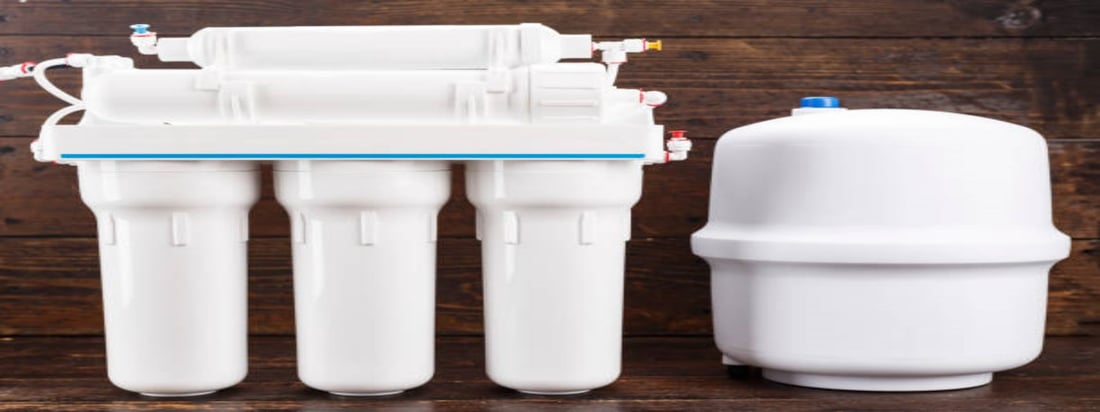An Introduction to Inline Water Filters
Water filtration is an essential process to ensure the purity and safety of our drinking water. There are various types of water filters available in the market, each designed to remove specific contaminants. Two popular types of inline water filters are Reverse Osmosis (RO) filters and Deionization (DI) filters. In this article, we will explore the differences between these two types of filters and understand how they work to provide clean and healthy drinking water.
Understanding Reverse Osmosis (RO) Water Filters
Reverse Osmosis (RO) water filters are widely used for residential and commercial purposes. These filters use the principle of osmosis to remove impurities from water. Osmosis is a natural process where a solvent, such as water, passes through a semipermeable membrane to equalize the concentration of solutes on both sides.
RO filters take this process a step further by using pressure to force water through a semipermeable membrane, effectively removing a wide range of contaminants. The membrane has microscopic pores that allow water molecules to pass through while trapping larger particles, such as dissolved salts, heavy metals, and organic compounds. The result is purified water that is free from harmful contaminants.
Benefits of Reverse Osmosis Water Filters
RO water filters offer several advantages over other types of filtration systems. Firstly, they are highly effective in removing contaminants, including chlorine, fluoride, bacteria, and viruses. This makes them suitable for areas with poor water quality or where specific contaminants are a concern.
Secondly, RO filters not only improve the taste and odor of water but also enhance its clarity. By removing impurities, they provide crystal-clear water that is not only safe but also visually appealing. Additionally, RO filters are relatively easy to maintain and require minimal replacement of filter cartridges, making them cost-effective in the long run.
Exploring Deionization (DI) Water Filters
Deionization (DI) water filters, on the other hand, are designed to remove dissolved impurities from water through a process called ion exchange. These filters use a resin bed containing ion exchange beads that attract and bind to charged particles, effectively removing them from the water.
DI filters are typically used in conjunction with other filtration systems, such as RO filters, to further purify water and achieve higher levels of purity. While RO filters remove a wide range of contaminants, DI filters focus on removing specific ions, such as calcium, magnesium, and sodium, which can affect water conductivity and quality.
The Advantages of Deionization Water Filters
DI water filters offer unique advantages in specific applications. They are commonly used in laboratories, pharmaceutical manufacturing, and industries that require ultra-pure water for specialized processes. By removing ions, DI filters ensure that the water used in these applications is free from any impurities that could interfere with experiments or damage sensitive equipment.
Furthermore, DI filters are often used as a final polishing step in water purification systems to achieve the highest level of purity. When combined with other filtration methods, such as RO, DI filters can deliver water that meets strict quality standards, making them an essential component in certain industries.
Choosing the Right Filter for Your Needs
When deciding between an inline RO water filter and an inline DI water filter, it is essential to consider your specific requirements. If you are looking for a comprehensive solution that removes a wide range of contaminants, including dissolved solids, heavy metals, and microorganisms, an inline RO filter may be the best choice.
On the other hand, if you require ultra-pure water for laboratory or industrial purposes, combining an inline RO filter with a DI filter can provide the desired level of purity. The combination of these two filtration methods ensures that both organic and inorganic impurities are effectively removed, leaving you with water that meets the highest standards.
Maintaining and Replacing Filter Cartridges
Proper maintenance of your inline water filter is crucial to ensure its optimal performance and longevity. Both RO and DI filters require regular cartridge replacement to continue providing clean and safe water.
RO filters typically have pre-filters that need replacement every 6-12 months, depending on the water quality and usage. The RO membrane itself may last for 2-3 years, but this can vary based on the quality of the water being filtered. DI filters, on the other hand, may require more frequent resin bed replacement to maintain their effectiveness.
Conclusion
Inline water filters play a vital role in ensuring the quality and safety of our drinking water. Whether you choose an inline RO filter or an inline DI filter, both offer significant benefits in removing impurities and providing clean water. Understanding the differences between these two filtration methods allows you to make an informed decision based on your specific needs and requirements.

